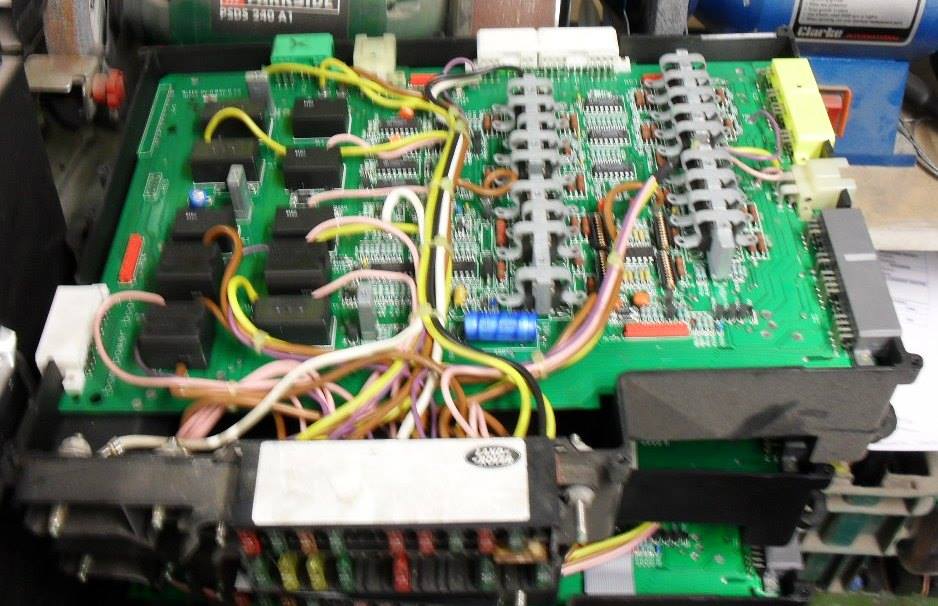Sending Items for Repair & Shipping details ✨
You Must Read ✔
👀👀👀 Click Here To Read Important Information 👀👀👀
UK Customers Only:
Due to the ever increasing number parcels sent to us that have not been booked in,
Or Contain owner information or details of any repairs or other information.
So we have changed the way bookings happen. You are now required to complete the booking form and print your copy of the form and place it with your items into your packaging. We will send you a DpD Label if you have ordered one when booking in.
It take 5 minutes to complete the form and print it out and place in your box.
” You might have phoned me last week and I advised you to send it in, But you and 50 others also, somethings I am very good, But mind reading is NOT one of them so please Help me Help you”.
Book Your Items in for repair using our repair booking service. This form helps identify its origin, owner and repair actions and places your repair into an organised structure which will generate updates each time an action is taken.
Click HERE Book your Items in for Repair UK Service
- All items must be sent via recorded service.
- To: The Key Centre, 2 Trem Y Gaer, High Street, Criccieth, Gwynedd, LL52 0BU
- All downloaded documents must be enclosed. (Booking Forms)
- All items must be cleaned.
- Do Not Fill your parcel with RUBBISH, Disposal charge may be applied.

Non UK Customers, items being sent from outside the UK,
You Must Read ✔
👀👀👀 Click Here To Read Important Information 👀👀👀
WARNING PLEASE READ
“If YOUR SHIPPER APPLIES ANY CHARGES THEY WILL BE PASSED BACK TO YOURSELF.
IN ADDITION TO THIS IF THE PAPER WORK IS DONE INCORRECTLY OR THE VALUES ARE TOO HIGH AND CHARGES ARE BROUGHT THEY WILL ALSO BE CHARGED BACK TO THE SHIPPER AND WE MAY APPLY AN ADMIN FEE”.
Click HERE Book your items in for Repair, NON UK Repair Service.

Understanding Customs Charges
How Import Duty and VAT are Calculated by Customs
When goods are imported into a country, customs authorities assess two primary types of fees: Import Duty (also known as Customs Duty or Tariff) and Value Added Tax (VAT), which is a consumption tax.
1. Import Duty (Customs Duty)
Import Duty is a tax levied on goods entering a country, primarily to generate government revenue and protect domestic industries from foreign competition.
How Duty is Determined
The duty rate is calculated as a percentage of the commercial value of the imported goods. This percentage is determined by three main factors:
| Factor | Description |
| A. Product Classification (HS Code) | Every traded product is assigned a specific code in the Harmonized System (HS). This code tells customs exactly what the product is (e.g., “men’s cotton t-shirts” or “desk lamps”). Customs uses this code to look up the specific duty rate for that item. |
| B. Country of Origin | The country where the goods were manufactured. Trade agreements between the importing country and the country of origin can result in a “preferential rate” (often 0% or reduced duty). If no agreement exists, the standard duty rate applies. |
| C. Customs Value | The value used for calculating duty is often the CIF value (Cost, Insurance, and Freight). This means the duty is calculated on the cost of the goods plus the cost of shipping and insurance. |
Duty Calculation Formula
Note on Thresholds: Many countries have a minimum value threshold. For example, in the UK, Import Duty is generally only charged on commercial goods valued over \text{\textsterling}135.
2. Value Added Tax (VAT)
VAT (or its equivalents like Sales Tax or GST in some countries) is a general consumption tax applied to nearly all goods and services. When importing, VAT is charged on the total cost to bring the goods into the country, including the Duty itself.
How VAT is Determined
The VAT rate is the standard rate for the destination country (e.g., 20% in the UK). It is applied to the total cost of the shipment after the duty has been added.
VAT Calculation Formula
The basis for VAT calculation includes the cost of the goods, shipping, insurance, and the Import Duty.
Simplified Example (Assuming a UK import)
| Item | Value (\text{\textsterling}) | Calculation |
| A. Cost of Goods | \text{\textsterling}1,000 | |
| B. Shipping & Insurance | \text{\textsterling}100 | |
| C. Customs Value (A+B) | \text{\textsterling}1,100 | |
| D. Import Duty (4% Rate) | \text{\textsterling}44 | \text{\textsterling}1,100 \times 0.04 |
| E. VAT Base Value (C+D) | \text{\textsterling}1,144 | \text{\textsterling}1,100 + \text{\textsterling}44 |
| F. Import VAT (20% Rate) | \text{\textsterling}228.80 | \text{\textsterling}1,144 \times 0.20 |
Total Due to Customs: \text{\textsterling}44 \text{ (Duty)} + \text{\textsterling}228.80 \text{ (VAT)} = \mathbf{\text{\textsterling}272.80}
| Total Landed Cost | \text{\textsterling}1,000 \text{ (Goods)} + \text{\textsterling}100 \text{ (Shipping)} + \text{\textsterling}272.80 \text{ (Customs)} = \mathbf{\text{\textsterling}1,372.80} |
Who Pays and When
- Payment Responsibility: Generally, the importer (the person or business receiving the goods) is responsible for paying these charges.
- Collection: These fees are usually collected by the shipping carrier (like FedEx, DHL, or Royal Mail) on behalf of the government, and the carrier will send you a bill or notify you before the goods are delivered.
- Postponed VAT Accounting: VAT-registered businesses often use a system called Postponed VAT Accounting, which allows them to declare and recover the import VAT on their regular VAT return instead of paying it upfront at the border.